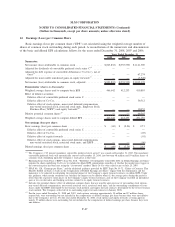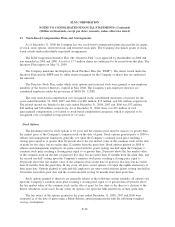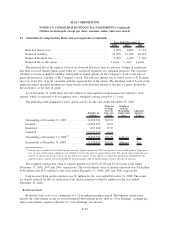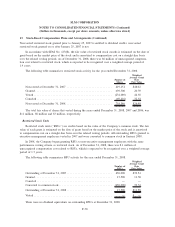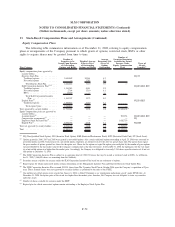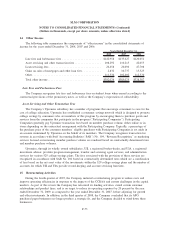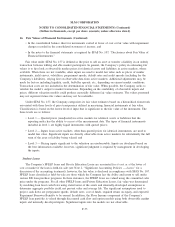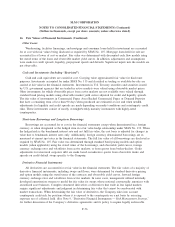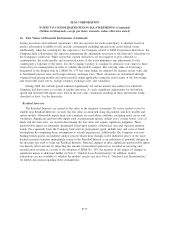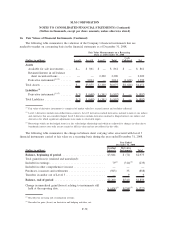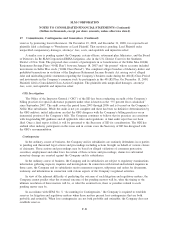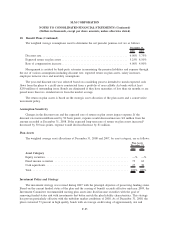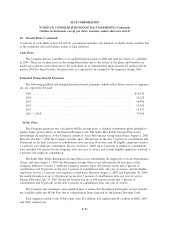Sallie Mae 2008 Annual Report Download - page 197
Download and view the complete annual report
Please find page 197 of the 2008 Sallie Mae annual report below. You can navigate through the pages in the report by either clicking on the pages listed below, or by using the keyword search tool below to find specific information within the annual report.16. Fair Values of Financial Instruments (Continued)
netting provisions and collateral agreements.) The net exposure for each counterparty is adjusted based on
market information available for the specific counterparty including spreads from credit default swaps.
Additionally, when the counterparty has exposure to the Company related to SLM Corporation derivatives, the
Company fully collateralizes the exposure minimizing the adjustment necessary to the derivative valuations for
the Company’s credit risk. While trusts that contain derivatives are not required to post collateral to
counterparties, the credit quality and securitized nature of the trusts minimizes any adjustments for the
counterparty’s exposure to the trusts. It is the Company’s policy to compare its derivative fair values to those
received by its counterparties in order to validate the model’s outputs. The carrying value of borrowings
designated as the hedged item in a SFAS No. 133 fair value hedge are adjusted for changes in fair value due
to benchmark interest rates and foreign-currency exchange rates. These valuations are determined through
standard bond pricing models and option models (when applicable) using the stated terms of the borrowings,
and observable yield curves, foreign currency exchange rates, and volatilities.
During 2008, the bid/ask spread widened significantly for certain interest rate indices for which the
Company had derivatives as a result of market inactivity. As such, significant adjustments for the bid/ask
spread and unobservable inputs were used in the fair value calculation resulting in these instruments being
classified as level 3 in the hierarchy.
Residual Interests
The Residual Interests are carried at fair value in the financial statements. No active market exists for
student loan Residual Interests; as such, the fair value is calculated using discounted cash flow models and
option models. Observable inputs from active markets are used where available, including yield curves and
volatilities. Significant unobservable inputs such as prepayment speeds, default rates, certain bonds’ costs of
funds and discount rates, are used in determining the fair value and require significant judgment. These
unobservable inputs are internally determined based upon analysis of historical data and expected industry
trends. On a quarterly basis the Company back tests its prepayment speed, default rates and costs of funds
assumptions by comparing those assumptions to actuals experienced. Additionally, the Company uses non-
binding broker quotes and industry analyst reports which show changes in the indicative prices of the asset-
backed securities tranches immediately senior to the Residual Interest as an indication of potential changes in
the discount rate used to value the Residual Interests. Material changes in these significant unobservable inputs
can directly affect income by impacting the amount of unrealized gain or loss recorded in servicing and
securitization revenue as a result of the adoption of SFAS No. 159. An analysis of the impact of changes to
significant inputs is addressed further in Note 8, “Student Loan Securitization.” In addition, market
transactions are not available to validate the models’ results (see also Note 8, “Student Loan Securitization,”
for further discussion regarding these assumptions).
F-77
SLM CORPORATION
NOTES TO CONSOLIDATED FINANCIAL STATEMENTS (Continued)
(Dollars in thousands, except per share amounts, unless otherwise stated)


